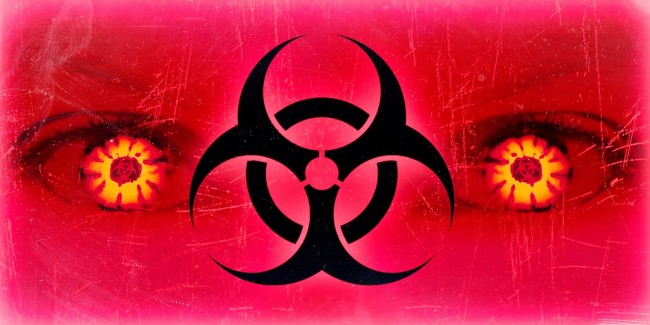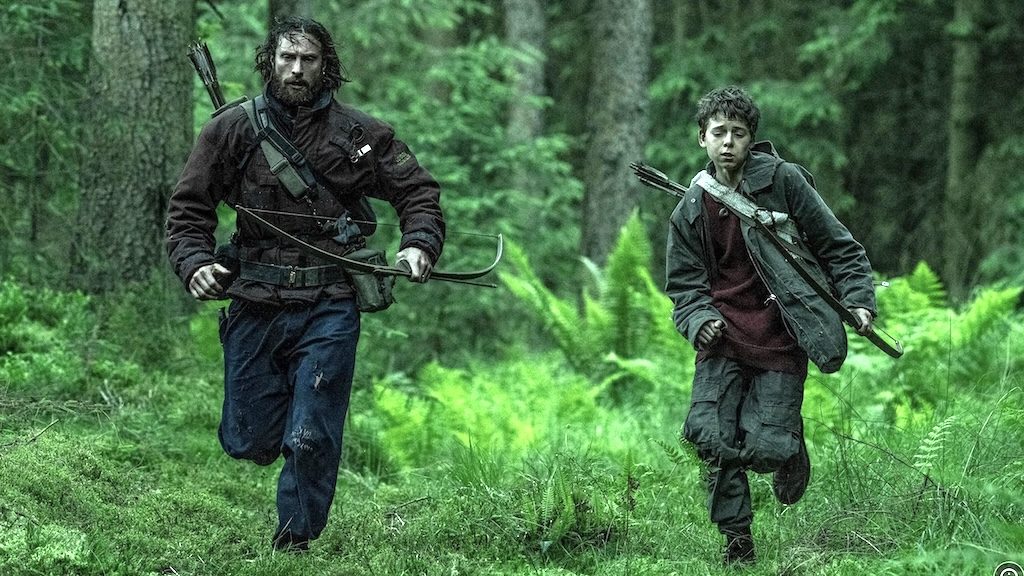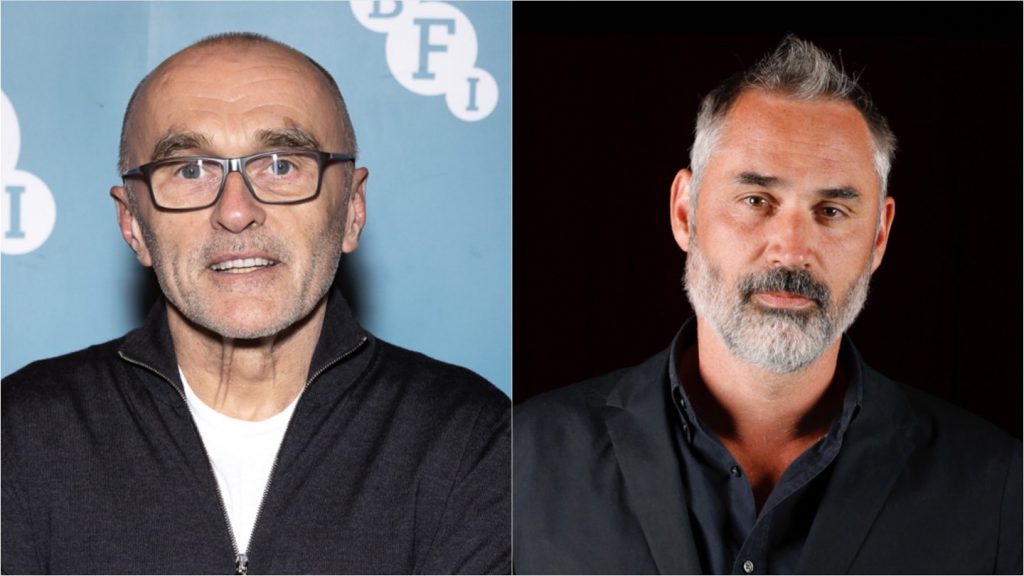How “28 Years Later” Expands and Deepens the 28 Days Horror Franchise

The 28 franchise has long held an important place in the catalog of post-apocalyptic zombie horror cinema. Since director Danny Boyle and screenwriter Alex Garland first introduced the world to the rage virus in 28 Days Later (2002), the series has evolved beyond mere zombie horror featuring infected or discombobulated humans. It was followed by 28 Months Later (2007) and now, the first in a new trilogy, 28 Years Later. The socially relevant horror franchise is slated to release 28 Years Later: The Bone Temple in 2026.
The thematic spine of 28 has consistently used its infected antagonists as a metaphor for humanity’s darkest corners, exploring uncomfortable themes of trauma, societal collapse, and moral decay. 28 Years Later expands on this bedrock and examines themes of isolationism, social inequality, authoritarian control, generational legacy, and fear of the “other.”
28 Years Later stands out, not just as a zombie horror film, but as a meditation on how individuals and societies confront mortality, change, and the need for connection and meaning in the aftermath of a catastrophe and ever-present threats.
”
From Survival and Trauma to Enduring Legacy
By setting the narrative nearly three decades after the original outbreak, 28 Years Later (hence the title) takes a conceptual leap that reshapes the backbone of the series. The movie no longer focuses on the chaos of the rage virus outbreak or its immediate aftermath, as 28 Days and 28 Weeks Later did. Instead, it contemplates the long-term consequences of surviving in a world where the infected remain a constant, mutating threat – an endemic if you will. Society needs to be redefined, repopulated, and readjusted for peace, survival and longevity.

Jamie (Aaron Taylor-Johnson) & Spike (Alfie Williams). Photo courtesy of Columbia Pictures/ Sony Pictures
This shift allows for a comprehensive exploration of generational trauma in cinema. The central character, Spike (Alfie Williams), is a child of the post-apocalypse—someone who has never known a world without the rage virus; much like children today not knowing a world without smartphones.
His reality is one of fortified communities, tribalism, violence, survivalist rituals, and the normalization of horror and death. Spike’s coming-of-age story—marked by a brutal rite in which boys must hunt infected people on the mainland—serves as the emotional spine of the film, revealing how fear and violence have become embedded into the cultural fabric of Lindisfarne.
Lindisfarne: A Society Returned To Basics
The film’s primary setting, a self-sustaining community on Lindisfarne (Holy Island), is both haunting and necessary. Through it, Boyle and Garland express an allegorical microcosm of human adaptation and regression into simpler times.
With its pre-industrial, Luddite way of life, the community represents a kind of enforced utopia, where survival depends not only on resourcefulness, but also on shared myth and ritual. Moreover, there isn’t another option other than to perish.
This environment is infused with symbolism—whether it’s the temple made of bones or the communal feasts ruled by rigid hierarchies.
Most striking, is the coming-of-age trial that turns violence into sacrament. For Spike and his peers, killing the infected is not just a necessity, but a sacred duty, highlighting how easily trauma can calcify into lasting tradition.
Evolving Horror: The Rage Virus as Living Myth
Perhaps the most exciting update in 28 Years Later is the introduction of new infected variants – a nod to new COVID strains.
The original rage virus was terrifying in its simplicity—fast, brutal, and relentless. Now, the virus has adapted. Alphas, more coordinated and strategic than their predecessors, hint at a menacing intelligence and threat. In contrast, the “slow-and-lows”—decomposing figures that have somehow stabilized—embody the grotesquerie of moral and physical decay.
These variants enrich the world’s mythology without over-explaining it. Instead of offering neat answers, Boyle and Garland illuminate the unpredictability of nature when corrupted by human error. The infected are no longer just a threat—they are an ecosystem of monsters that we must manage before they destroy us.
Humanity in the Time of Collapse
What elevates 28 Years Later above its genre trappings is its emotional heft. Spike’s desperate journey to save his terminally ill mother, Isla (Jodie Comer) infuses the story with intimacy and desperation. The film’s tension does not just come from external zombie threats, but from the internal dilemmas the characters face—euthanasia, trust, sacrifice, and what it means to protect those we love in a world that no longer values life. It’s a simple mantra of kill or be killed.
New characters, such as the enigmatic Dr. Kelson (Ralph Fiennes) and a pregnant infected woman (Celi Crossland) who gives birth to an uninfected child, introduce moral ambiguity that forces both the characters and audience to question the boundaries of humanity. Is survival enough? Or must it be preferenced by compassion and ethical reasoning?

Danny Boyle & Alex Garland
Subverting Sequel Expectations
In an era where franchises are engineered to churn out spin-offs and sequels, 28 Years Later is refreshingly subversive and remains true to its indie film roots. While it marks the beginning of a new trilogy, it refuses to rely on nostalgia or familiar tropes. Team Boyle and Garland deliberately sidestep the usual franchise machinations—there are no hollow callbacks, no overexplained lore drops, and no promise of a neatly tied narrative arc.
Instead, the film ends with ambiguity and open-endedness – as are the other films.
Spike’s encounter with “Sir” Jimmy (Jack O’Connell), a haunting relic of the original outbreak, leaves the door open for continuation, but offers no clues or direction. This refusal to resolve the story is not a structural weakness, but a feature. It reinforces the central pulse of the franchise: in a world defined by chaos, there are no easy answers or clear pathways forward—only uncertain futures.
Boyle and Garland’s Joint Vision
One of the defining qualities of 28 Years Later is the unmistakable presence of its creators. Boyle’s intimate direction and experimental cinematography—often shot on iPhones to amplify the sense of immediacy—lend the film a gritty, documentary-style texture. Moments of brutal violence are juxtaposed with surreal beauty: a field of poppies growing from a mass grave, or the temple of bones.
Garland’s interest in memory, legacy, and the human psyche are woven throughout the story. Their collaboration results in a film that is both intimate and epic, brutal and lyrical in its beauty.
Conclusion: A Zombie Franchise Refreshed
28 Years Later is not simply a sequel—it is a solid reinvention of its mythology. Where 28 Days Later introduced the terror of societal collapse and 28 Weeks Later explored its militarized aftermath, this third chapter considers the long, slow corrosion of humanity in a world that no longer remembers peace or humanity. Life is an eternal nihilistic struggle.
In an era of formulaic sequels and franchise fatigue, 28 Years Later stands apart by truly understanding its thematic heart. It’s an intelligent, emotional, and unsettling depiction of what it means to live in the aftermath of apocalypse.
Join the Discussion!
Related Articles
Browse our Videos for Sale
[woocommerce_products_carousel_all_in_one template="compact.css" all_items="88" show_only="id" products="" ordering="random" categories="115" tags="" show_title="false" show_description="false" allow_shortcodes="false" show_price="false" show_category="false" show_tags="false" show_add_to_cart_button="false" show_more_button="false" show_more_items_button="false" show_featured_image="true" image_source="thumbnail" image_height="100" image_width="100" items_to_show_mobiles="3" items_to_show_tablets="6" items_to_show="6" slide_by="1" margin="0" loop="true" stop_on_hover="true" auto_play="true" auto_play_timeout="1200" auto_play_speed="1600" nav="false" nav_speed="800" dots="false" dots_speed="800" lazy_load="false" mouse_drag="true" mouse_wheel="true" touch_drag="true" easing="linear" auto_height="true"]










You must be logged in to post a comment Login